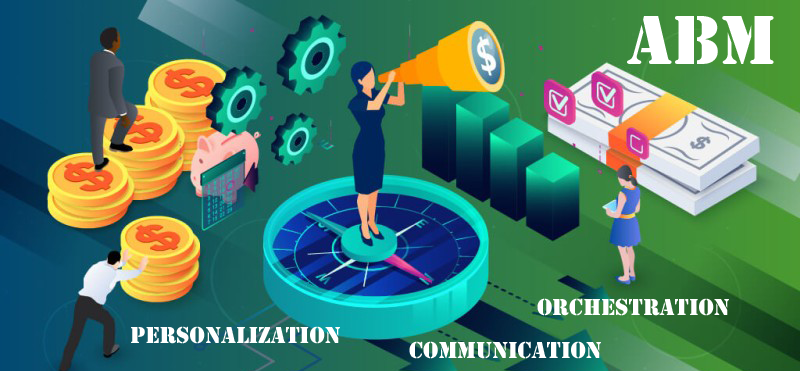
Do you have a POV on ABM? Most marketers think they have a pretty good idea of what ABM is about. After all, it’s been a buzz word for years! But as I consult with CMOs at companies large and small, I’m constantly surprised at how broad the definition is. Many leaders think ABM is a technology. Many think it’s about selecting some accounts they want to sell to. And the majority think it’s “marketing as usual (MAU)” with an account focus.
Want to understand what ABM really is? Let’s start by defining what it is NOT…
- ABM is NOT a tech-only solution.
- ABM is NOT another marketing fad.
- ABM is NOT a silver bullet.
ABM Truth #1 – ABM is NOT a Tech-Only Solution
As much as software providers might like you to believe it, ABM is NOT just a technology purchase. With too many MarTech platforms to count on the market, it may seem like you could pick a solution off the shelf. But purchasing an ABM tool or intent data will not ensure account engagement or program success.
Why? Because ABM is a discipline based on customer insight, personalization, and cross-functional collaboration. To make it work, organizations must fix their communications problems and meet their customers’ information needs. Unfortunately, while technology can enable cross-functional communication, it cannot replace it.
ABM Truth #2 – ABM is NOT another Marketing Fad
ABM is NOT just another point solution executed by marketing. ABM IS an account-centric form of demand generation for use in expanding the customer base and cultivating net-new clients. But that’s not just Marketing’s job – it takes the whole village! Marketing may have been on point for customer experience in the past, but now everyone must get on board.
As organizations project the life-time value of key accounts, they are realizing they cannot maximize results by continuing to deliver siloed marketing and sales experiences. Successful organizations see ABM as a methodology for working across silos to satisfy the rapidly changing needs of new and existing key accounts. ABM is not about business-as-usual with an account focus, it’s about organizing to meet customer needs at every level and every stage.
ABM Truth #3 – ABM is NOT a Silver Bullet
ABM is NOT a silver bullet for fast revenue. So much has been written about the great results of an ABM program, it may look like a quick fix… Just look at these numbers:
- 87% of marketers say ABM outperforms all other marketing investments in terms of ROI (ITSMA)
- Average contract value increased by 171% after implementing Account-Based Marketing (ABM Alliance Research)
- 86% of surveyed companies reported higher close rates with using Account-Based Marketing and increased lifetime customer value (Topo via 6Sense)
- More than 57% of surveyed companies reported significant increases in per-account pipeline and 59% significant increases in per-account revenue. 69% see significant increases in cross and upsell. (Demandbase/Engagio)
Not so fast. It takes years for companies to develop effective demand-generation engines. Some never do. Cast in this light, TPG’s point of view is that ABM skills must be developed over time. As we discussed in the last section, Marketing and sales must learn to orchestrate customer experiences together, which is a substantial sea-change for most organizations.
Meanwhile, customers are demanding relevant, connected communications and increasingly will not forgive a fragmented experience. If you cannot wait for your organization to evolve an effective ABM program organically, consider engaging a consulting partner. An organization with “outside in” vision can help you adopt ABM skills more quickly and drive organizational change more cohesively than is often possible from the inside.
ABM – NOT Just Another Campaign Type
In the end, Account-based Marketing is a form of Demand-Gen marketing, but with a very different approach. ABM’s methodology isn’t technology-first, but is technology-enabled. It’s not just another Marketing campaign, but it requires all those skills. It’s not a silver bullet in the short term, but a solid approach for maximizing account value over the long-term.
It’s time to step back and re-think your point of view on ABM. Before you rush ahead, build the institutional muscle memory required for long-term ABM program success. Create a collaborative, customer-first culture that delivers a lifetime of value for all the accounts you have now and want to serve in the future.
